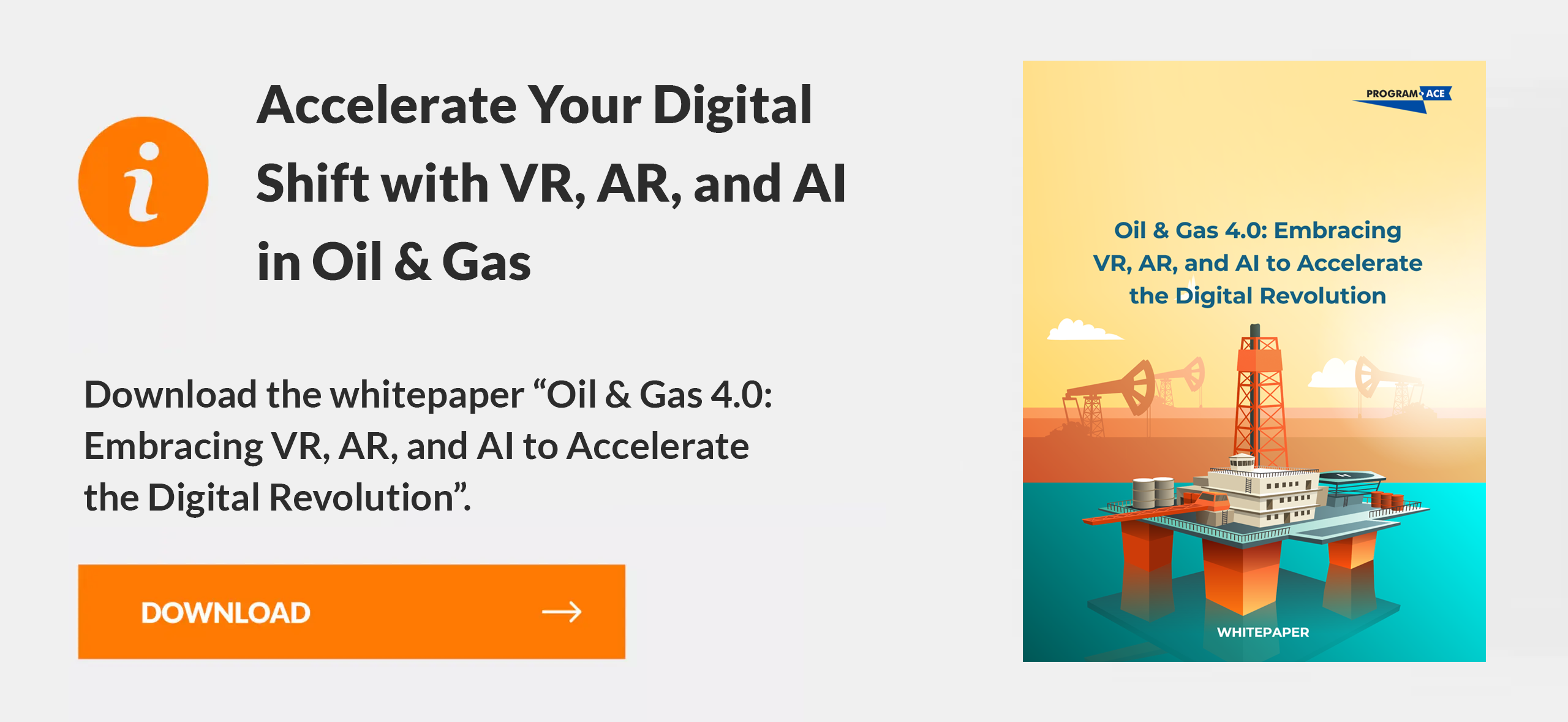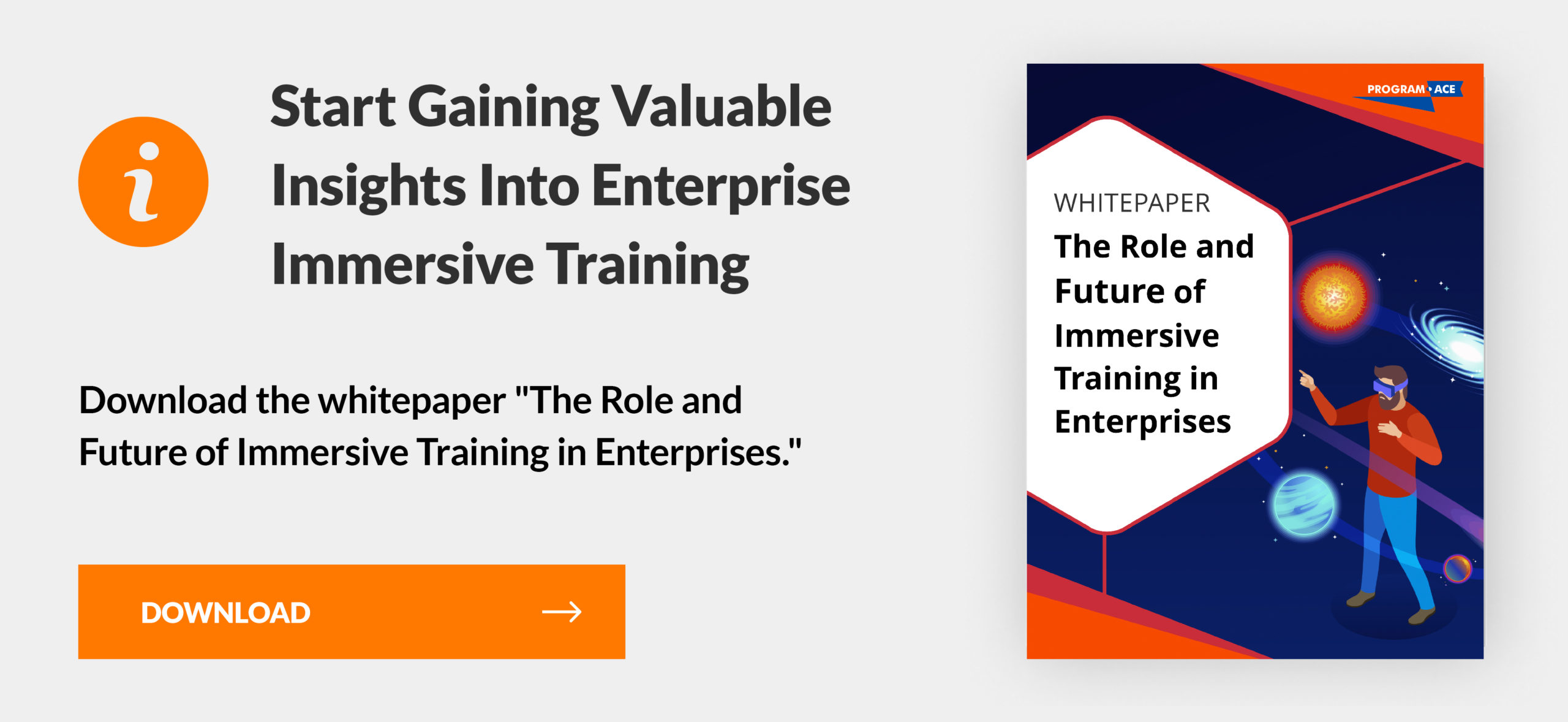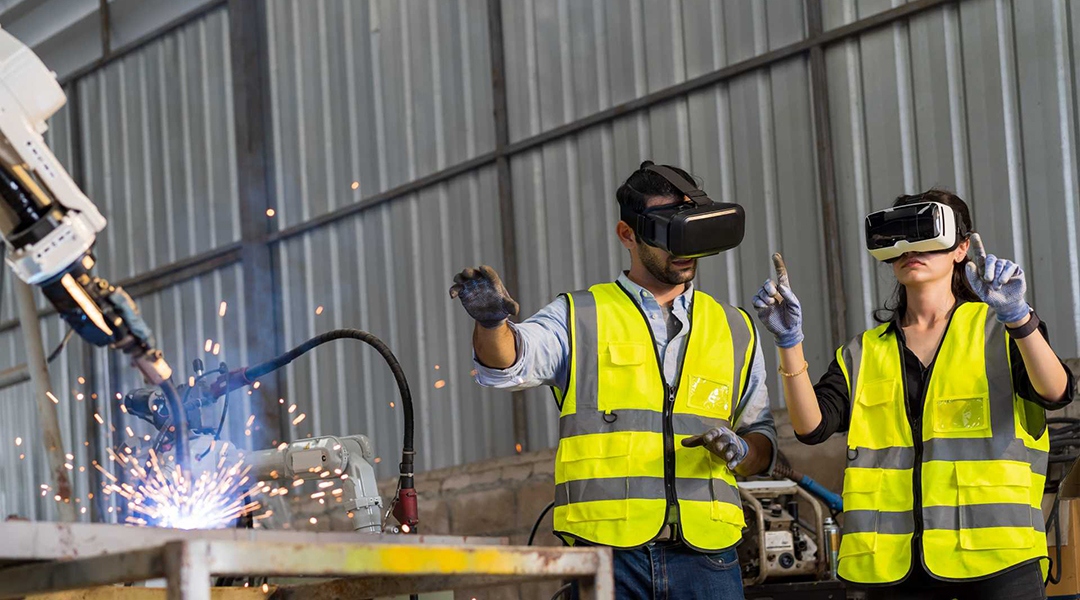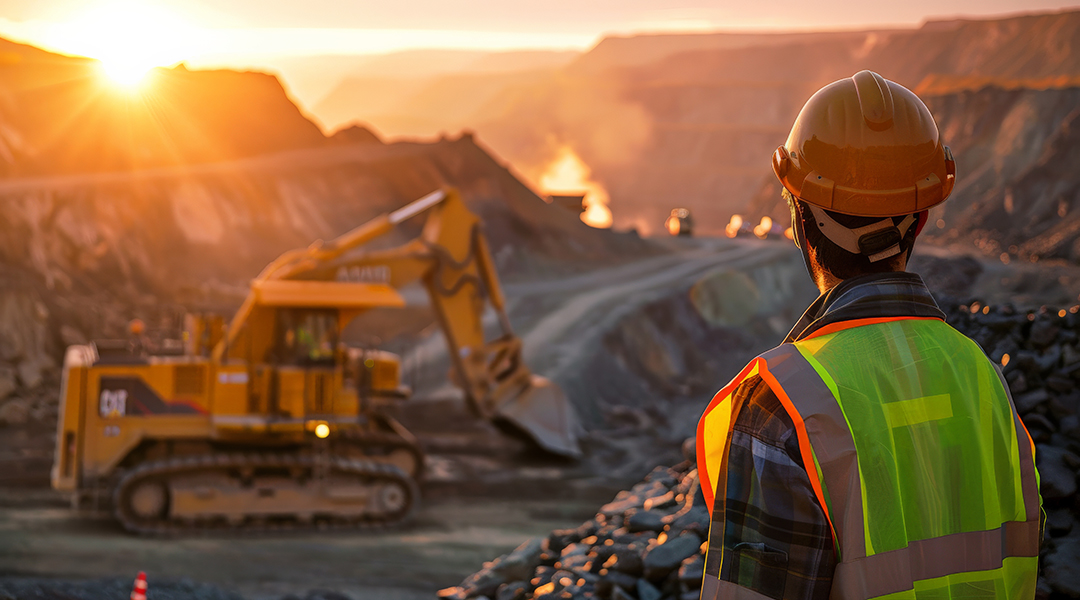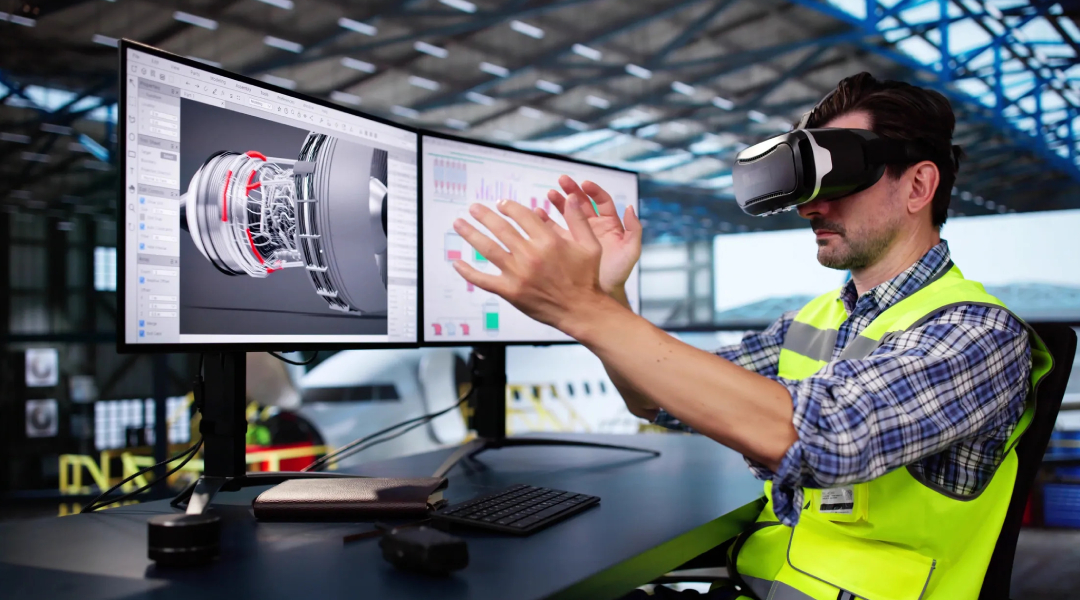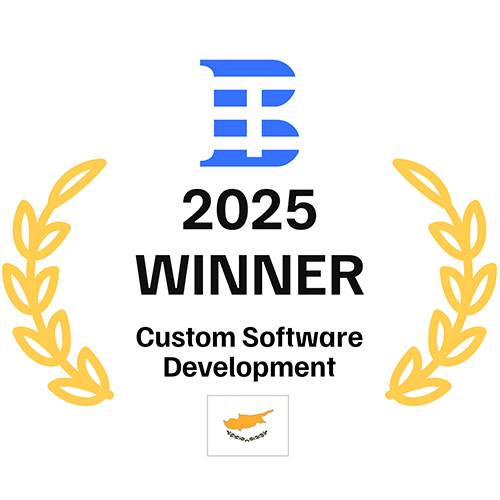Virtual training solutions also bring the advantage of real-time performance tracking, allowing supervisors to monitor progress and identify areas for improvement. Teams can train repeatedly in various simulated scenarios, reinforcing skills and preparedness for routine and emergency operations.
VR eliminates geographical constraints, offering flexibility for remote training sessions, making it a practical tool for companies managing multiple locations. By enhancing training accessibility and depth, oil and gas firms can boost their workforce's efficiency while maintaining safety standards. The technology provides a forward-thinking solution to tackle the industry's most pressing training needs.
In addition to improving skills, VR training solutions allow oil and gas companies to optimize costs associated with traditional training methods. There’s no need to halt operations for in-person sessions or send employees to distant locations. The technology enables customized training modules based on specific tasks, ensuring employees receive relevant instruction.
As the demand for skilled workers continues to grow, the flexibility offered by virtual training solutions ensures that companies can maintain a well-prepared workforce without disrupting daily operations. This cost-efficient approach brings long-term benefits to businesses.
Into the Power of VR Training in Oil and Gas
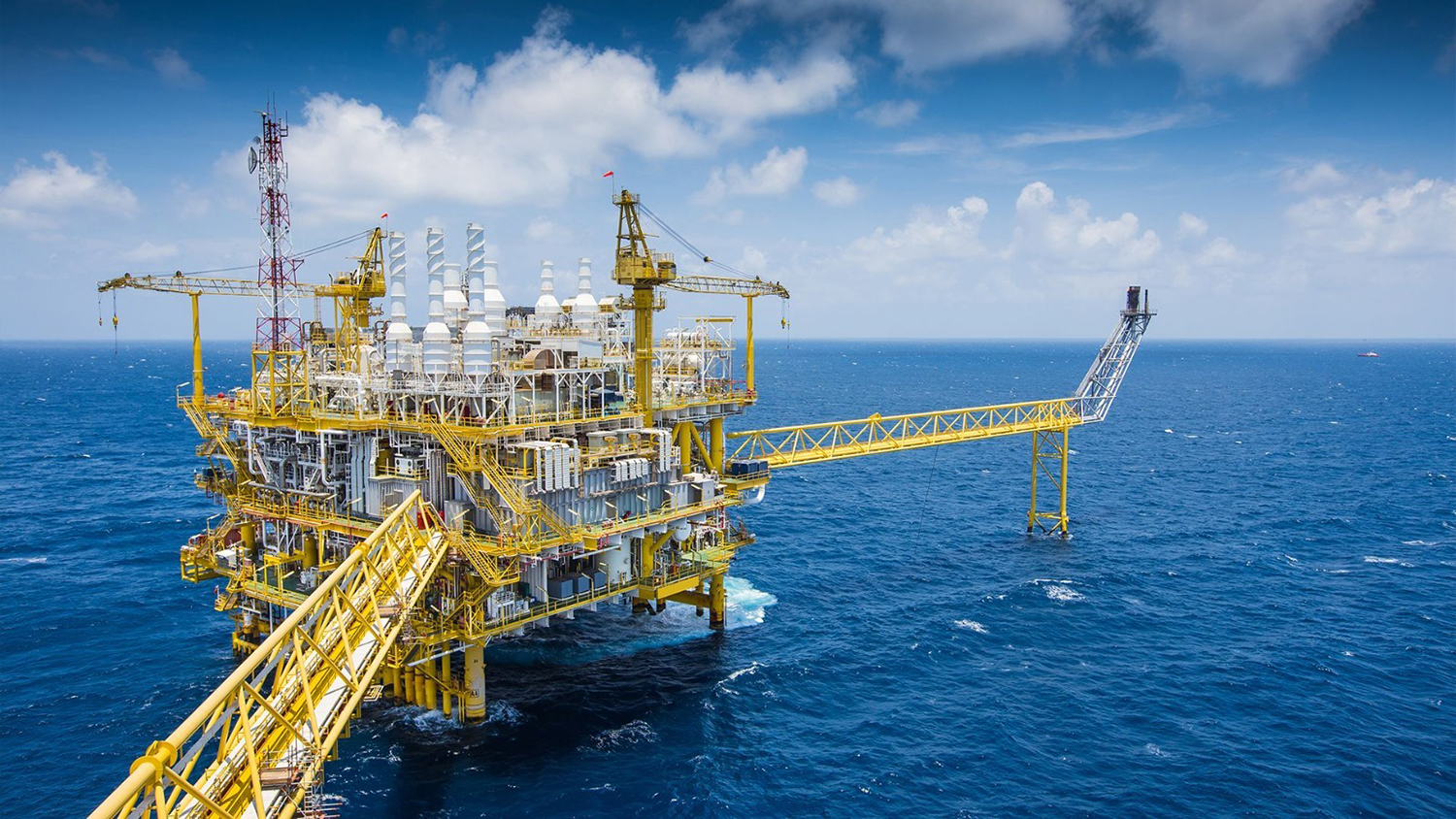
The oil and gas industry faces many challenges when it comes to preparing employees for high-risk tasks. Virtual training solutions provide an efficient way to simulate dangerous environments without exposing workers to harm. Companies can design programs that simulate everything from equipment failure to emergency evacuations, enabling employees to gain practical experience. Additionally, VR training solutions can be tailored for chemical safety training, enabling employees to practice handling hazardous materials in a controlled virtual environment.
These programs not only save time but also enhance employee performance by providing them with relevant scenarios that match their everyday responsibilities. As a result, virtual training solutions have become essential in ensuring safety, reducing downtime, and addressing training needs without interrupting daily operations. With its ability to streamline complex learning processes, VR helps companies build a more prepared workforce.
Enhancing Safety through Immersive Training Experiences
Safety remains a top priority for oil and gas companies, and simulation training through virtual reality makes it possible to improve outcomes without risk. Employees can practice responding to gas leaks, fires, or equipment failures while safely learning the best ways to handle such events. The use of simulation training enhances skill retention, as workers can repeat key drills until they master their responses.
Offshore teams can simulate evacuation procedures in detail, enabling them to act with precision in the event of an emergency. Onshore workers can undergo training focused on handling dangerous chemicals or managing malfunctions. Such realistic, role-based training ensures that employees are prepared for critical tasks while keeping safety in mind. The flexibility of simulation training allows companies to adjust programs based on specific needs, ensuring that all safety requirements are met effectively.
Boosting Efficiency by Simplifying Complex Training Programs
Complex training programs in oil and gas can be difficult to manage, but virtual reality significantly simplifies them by making learning interactive. Workers no longer have to rely on written manuals or traditional classroom settings to master complex tasks. VR training modules allow workers to engage with equipment virtually, replicating real-world operations like pipeline management, offshore drilling, or heavy machinery operations.
Training becomes more dynamic, enabling employees to explore procedures step by step while gaining practical insights. Additionally, VR programs can be easily adjusted to accommodate different job roles, ensuring each worker receives the most relevant information. Teams can complete their training quickly and move to real-world applications with higher confidence. The scalability of VR programs ensures that companies can train entire teams efficiently, regardless of location, creating a seamless and practical learning experience for workers across the organization.
Reducing Costs with Scalable and Repeatable VR Training Modules
Virtual reality simulations offer an effective way for oil and gas companies to reduce training costs while maintaining high safety and skills development standards. Traditional training methods often require significant resources, including travel expenses, equipment setup, and operational downtime. By incorporating virtual reality simulations, companies can provide immersive, repeatable training without these costs. In a controlled environment, employees can repeatedly practice critical tasks, such as equipment maintenance or emergency procedures.
Additionally, VR training modules can be easily scaled, allowing companies to simultaneously train teams across multiple locations. The ability to customize simulations for specific job roles ensures that each employee receives tailored instruction, further boosting training efficiency. As a result, the scalability and repeatability of virtual reality simulations provide long-term cost savings for oil and gas firms, making training more efficient without sacrificing quality or safety. The technology enables ongoing learning without recurring high expenses, streamlining workforce development.
How Does Virtual Reality Training in Oil and Gas Stack Up against Traditional Methods?
Virtual simulation in the oil and gas industry presents significant advantages over traditional training methods. Historically, training required employees to engage in physical drills or classroom-based instruction, often resulting in high costs and limited practical application. Virtual reality, on the other hand, provides a more efficient way to train workers for hazardous environments or complex operations without disrupting production or risking safety.
By simulating real-life scenarios, companies can offer hands-on experience in areas like offshore drilling, pipeline maintenance, or emergency response, all while employees remain in a safe and controlled setting. With traditional methods, repeating training sessions can be expensive and time-consuming. Virtual simulations eliminate that issue by allowing workers to practice repeatedly without additional setup or resource allocation. Teams can train remotely, reducing the need for travel and equipment shutdowns. Furthermore, VR enables particular scenarios that mirror job-related tasks, offering direct relevance to each employee’s role.
As a result, virtual training provides greater flexibility and ensures that skills are learned and refined without the drawbacks of conventional approaches. By transitioning to virtual reality training, companies can minimize costs, enhance employee preparedness, and optimize overall efficiency.
Types of VR Training Programs in the Oil and Gas Industry
Virtual reality training in the oil and gas sector addresses a broad spectrum of operational needs. By simulating realistic scenarios, these programs help employees develop the necessary skills and responses to handle complex tasks in various environments. From safety protocols to technical training, VR has made it easier to conduct effective and engaging learning sessions. Below are some key types of VR training programs currently used in the industry:
- Safety and emergency response. Workers practice responding to emergencies like gas leaks, fires, or explosions in a simulated environment, ensuring preparedness without exposing them to real hazards.
- Equipment operation. Employees learn to operate heavy machinery and complex tools virtually, avoiding potential accidents during the initial hands-on experience.
- Offshore platform operations. Workers can familiarize themselves with specific offshore processes, like platform evacuation or oil rig maintenance, enhancing safety and performance.
- Hazardous material handling. Specialized VR programs focus on the proper handling and disposal of dangerous substances, reducing the risks of exposure.
- Pipeline maintenance. Technicians receive training on pipeline inspection, repair, and safety protocols, reducing the chances of failure in real operations.
These VR training programs enhance skill retention and offer flexibility for remote teams, enabling cost-effective, scalable learning solutions. Each program is designed to target specific tasks and roles, providing a practical, hands-on experience without interrupting daily operations. As VR continues to advance, its applications in training will expand, ensuring that oil and gas companies are better equipped to train their workforce.
Real-World Impact of VR Training on Your Business
Virtual reality simulations provide measurable results for businesses in the oil and gas industry. Companies can achieve higher efficiency and safety by reducing downtime and operational risks. Workers gain hands-on experience in emergency response, hazardous material handling, and equipment operation without interrupting daily workflows.
VR enables businesses to scale training, minimize travel expenses, and offer repeatable modules tailored to specific roles. Ultimately, virtual reality simulations result in cost savings, increased safety, and more skilled employees, all of which contribute to more robust operational performance and a safer work environment.
Emergency Response Training in High-Stakes Environments
Emergency response is a critical area where VR training excels, especially in the high-risk oil and gas industry. Virtual reality allows workers to practice life-saving protocols in highly realistic, high-pressure scenarios without exposing them to actual danger. From gas leaks to fire evacuations, employees can practice their responses repeatedly, gaining confidence and improving reaction times. VR training prepares teams for situations that demand immediate decision-making under stress, ensuring that employees know how to respond to real-life crises.
For example, offshore platforms can simulate full evacuations, while onshore teams can practice emergency shutdown procedures. These exercises build familiarity with proper protocols and increase team coordination. Unlike traditional methods, VR offers an immersive environment that closely replicates real emergencies. Repeated exposure to these situations through VR reinforces learning and ensures each worker is ready for emergencies in their specific environment.
Simulated Equipment Handling for Maintenance Teams
Virtual reality offers clear benefits to maintenance training, allowing workers to simulate equipment handling and repairs without any risks involved. Teams can go through complex procedures like machinery inspections, system diagnostics, and repairs while keeping actual equipment safe from damage. Workers receive thorough training in virtual settings before tackling real-world tasks, which significantly reduces the chance of accidents and prevents costly downtime.
Technicians engage in virtual scenarios where they practice routine maintenance on heavy machinery or pipelines, identifying issues early and learning how to address them. Practical experience gained through simulations improves technical skills, making teams more confident and capable when working under pressure. Additionally, VR-based training ensures that companies can implement standardized maintenance practices across various locations, ensuring consistency and high-quality results.
Preparing for Hazardous Situations with VR Risk Identification
Virtual reality training solutions offer a proactive approach to preparing for hazardous situations by enabling risk identification in a controlled environment. Simulations recreate high-risk scenarios like chemical spills, equipment malfunctions, or fire outbreaks, allowing workers to experience potential dangers without real-world consequences. A critical distinction between digital twins and simulations lies in their application. Simulations provide virtual scenarios based on predefined conditions, while digital twins replicate exact real-world assets, providing a more detailed, dynamic representation.
Companies can train employees to respond effectively to various risks using digital twins and simulations. For example, discussing the dilemma of digital twin vs. simulations, a digital twin might mirror an offshore platform, allowing teams to monitor real-time data and practice handling specific malfunctions. Simulations, on the other hand, focus on hypothetical scenarios, such as emergency evacuations. By combining both approaches, companies ensure comprehensive preparation for hazardous situations, enhancing response times and minimizing risks during critical moments in the oil and gas industry.
Virtual Reality Training Solutions for Oil and Gas That Fit Your Needs
Tailored virtual reality training solutions are essential for addressing the unique challenges of the oil and gas industry. Each company faces specific tasks, from handling hazardous materials to maintaining complex equipment. VR offers the ability to customize programs that reflect these real-world needs, ensuring workers receive the most relevant training possible. By focusing on company-specific operations, VR provides a hands-on approach to skill development, enhancing safety, efficiency, and overall performance.
Why Customization Matters for Oil and Gas Training
Customization is critical for oil and gas companies, as each operational environment presents unique risks and challenges. Off-the-shelf training programs often fail to address industry-specific needs, making custom virtual reality solutions a necessity. Personalized programs can mirror real-life operations and tasks, allowing workers to practice their roles in highly relevant scenarios. For example, offshore rig operators can receive specialized training on evacuation procedures, while maintenance teams can focus on equipment-specific repairs.
Custom VR training provides the following benefits:
- Targeted skill development. Employees gain relevant expertise based on their specific job roles, improving performance in real-world situations.
- Realistic risk preparation. Training modules simulate hazards unique to the company’s operations, enhancing response times and safety measures.
- Improved engagement. Workers stay engaged when training matches their daily tasks, leading to better knowledge retention and application.
Oil and gas companies can ensure their employees are better prepared for job-specific challenges by investing in customized VR solutions.
Creating Immersive and Engaging Training Modules
Designing immersive and engaging training modules helps maintain workers' focus while developing practical skills during VR sessions. Virtual reality creates an interactive environment where employees practice tasks that would be too risky or expensive in the real world. For example, modules simulate intricate pipeline repairs or emergency procedures, allowing employees to build hands-on experience safely.
Training becomes more memorable and impactful as workers directly engage with scenarios tied to their roles. Each module can be tailored to industry-specific activities, helping employees prepare for real-world challenges. The dynamic nature of VR boosts worker involvement and strengthens problem-solving abilities as they confront realistic situations requiring quick decisions and active participation.
The Flexibility and Scalability of Custom VR Solutions
Custom VR solutions are adaptable and scalable, ideally suited for companies managing diverse or widespread teams. Whether training a specialized group or a larger workforce, VR adjusts to meet varying demands, cutting down on the logistical hurdles and expenses often associated with traditional training. Virtual reality systems can be updated swiftly, aligning training programs with business needs.
Uniform training across different locations becomes more streamlined as teams can train simultaneously and receive consistent instruction. When new challenges emerge, or procedures evolve, VR modules are easily refined or expanded to address these updates. Custom VR solutions offer a flexible way to maintain workforce readiness and ensure employees remain aligned with changing industry standards.
Unconventional Approaches to Virtual Reality Training in Oil and Gas
The oil and gas industry embraces innovative methods to improve training outcomes, moving beyond traditional simulations. Unconventional approaches such as gamification, immersive storytelling, and psychologically driven learning models are gaining traction. These methods make learning more engaging and impactful, helping employees retain skills more effectively. By leveraging advanced virtual reality techniques, companies can train their workforce dynamically and interactively, adapting to industry needs while improving safety and efficiency.
Gamifying Training and Making Learning Memorable
Gamification is transforming how training is delivered in the oil and gas industry, making learning more engaging and enjoyable for employees. By incorporating game mechanics, such as scoring systems, challenges, and leaderboards, VR training shifts from passive instruction to active participation. Employees are more likely to immerse themselves in tasks when they can track their progress and compete with peers.
For example, workers can be rewarded for completing complex tasks under time constraints or solving problems efficiently. This competitive element encourages engagement and helps solidify key concepts.
Here are some core benefits of gamified training:
- Enhanced motivation. Employees become more motivated to learn as they progress through levels and challenges.
- Increased retention. Gamified learning makes skills and knowledge stick better due to repetitive and interactive tasks.
- Improved collaboration. Team-based tasks foster better communication and problem-solving among workers.
By gamifying VR training, companies make learning more interactive and memorable, resulting in a more skilled and confident workforce.
The Psychological Edge — How VR Triggers Better Retention
Virtual reality training taps into the brain's psychological mechanisms to enhance memory retention. Unlike traditional learning methods, which rely on passive observation, VR engages multiple senses, creating a more immersive and memorable experience. The brain responds better to learning when it feels immersed in the environment, making it easier to retain information over the long term.
By simulating real-life situations, VR training triggers an emotional and cognitive response that reinforces memory pathways. For instance, emergency response drills in VR can create a heightened sense of urgency, activating the brain's fight-or-flight response and solidifying the learned behavior. Role-based scenarios further engage the brain's problem-solving abilities, leading to deeper learning. Virtual reality provides a powerful tool for companies looking to improve long-term employee performance and skill retention, all by leveraging the brain's natural processes to make learning stick.
Collaborative Training in Simulated Risk Scenarios
Collaborative virtual reality training enables oil and gas teams to practice high-risk scenarios together without exposing them to actual danger. Team members engage in simulations such as emergency responses, equipment malfunctions, or hazardous material handling, strengthening their ability to communicate and solve problems as a group. The immersive nature of VR closely mimics real-life challenges, fostering hands-on collaboration.
Simulated risk scenarios are instrumental in developing team coordination and enhancing quick decision-making. For example, teams practice responding to gas leaks, fires, or system breakdowns, working together to react efficiently. Real-time interaction between participants amplifies the effectiveness of VR training, especially for complex tasks that require precise role distribution.
Notable benefits of collaborative VR training include:
- Improved teamwork. Employees practice working together effectively and better understanding each other’s roles.
- Enhanced problem-solving. Collaborative exercises help teams tackle challenges in real time, refining their ability to resolve issues under pressure.
- Realistic practice. Workers engage in simulations that mirror the risks they face on the job, increasing their preparedness for actual events.
Choose our expert team for quality VR training solutions.
The Future of Virtual Reality Training for Oil and Gas
The future of virtual reality training in the oil and gas industry is set to evolve with advancements in technology and immersive learning techniques. VR will focus on safety and operational training and integrate more complex systems like artificial intelligence and machine learning to customize training programs further. As these technologies become more accessible, companies can expect faster, more effective employee training, reducing risks and improving overall operational efficiency. VR’s adaptability ensures that training programs can evolve alongside industry demands, offering ongoing support for workforce development.
The Role of Sensory Feedback in Improving VR Training
Sensory feedback plays an essential role in enhancing the effectiveness of virtual reality training in the oil and gas industry. Incorporating haptic feedback, sound, and even temperature variation helps create a more realistic and immersive experience for employees. When workers can physically feel the weight of a virtual tool or hear the subtle changes in a machine’s operation, their training becomes more engaging and practical. This kind of sensory input reinforces memory retention and helps employees react more intuitively to real-life scenarios.
For example, emergency drills that simulate equipment vibrations or environmental changes allow workers to develop a heightened sense of awareness, closely mimicking the sensations they will face in the field. Over time, the use of sensory feedback in VR training will move beyond visual and auditory elements to include a broader range of experiences that more accurately reflect on-site conditions. This added layer of immersion deepens the learning experience, helping employees to better prepare for high-risk environments.
Combining Virtual Reality with Data Analytics for Better Results
Pairing virtual reality training with data analytics offers a powerful combination that enhances learning outcomes and operational insights. As employees complete VR training modules, data can be collected on their performance, identifying areas where they excel or need further improvement. This analytical feedback allows trainers to tailor future training sessions to address specific weaknesses or build upon strengths, creating a more personalized and effective learning path. Data analytics also help track progress, showing how an employee’s performance evolves through repeated training sessions.
Companies gain a deeper understanding of their workforce's capabilities by analyzing metrics such as task completion time, accuracy, and decision-making processes. This real-time insight is invaluable for identifying potential risks before they escalate into significant issues. In addition, combining data analytics with VR allows companies to measure the impact of training in ways that traditional methods cannot, leading to better-prepared teams and more efficient operations overall. As both technologies advance, their integration will continue reshaping how oil and gas companies train and develop their workforce.
How VR Changes Leadership and Decision-Making Training
Virtual reality is transforming leadership and decision-making training by immersing leaders in real-time, high-pressure scenarios that closely simulate the challenges they face in the oil and gas industry. Rather than relying on theoretical lessons, VR allows leaders to experience the direct consequences of their choices in a controlled environment, helping them develop sharper decision-making skills.
Leadership development in VR also promotes quicker learning and more accurate assessments of how leaders handle critical situations. In these simulated environments, participants gain valuable insights into their leadership style and how it impacts team dynamics.
Some advantages of using VR for leadership training include:
- Real-world simulation. Leaders encounter real-life scenarios where their decisions directly affect outcomes.
- Risk-free learning. Mistakes made in VR come without consequences, allowing leaders to learn and adapt more effectively.
- Enhanced critical thinking. Participants are encouraged to make decisions under pressure, improving their problem-solving abilities and confidence in high-stakes situations.
Virtual reality provides a practical, hands-on approach that reshapes how leadership and decision-making skills are taught and applied.
5 Approaches to Implement Virtual Reality Training Solutions for Oil and Gas
Virtual reality training offers a range of methods for oil and gas companies looking to develop a more skilled and prepared workforce. Each approach can be tailored to fit specific operational needs, making VR training both flexible and impactful across different areas of the industry.
- Simulated emergency drills. Creating immersive emergency scenarios allows workers to practice responses to crises like gas leaks, fires, or equipment malfunctions. This hands-on experience helps them react more confidently when real situations arise.
- Equipment operation modules. Workers can train on virtual replicas of heavy machinery or complex systems, allowing them to build familiarity with equipment before handling it in the field. This reduces the risk of errors during initial training periods.
- Role-specific training programs. Customizing VR modules for different job roles ensures employees receive relevant training tailored to their day-to-day tasks. Whether offshore drilling or refinery management, the focus remains on real-world applications.
- Team collaboration scenarios. Virtual environments allow teams to work together on solving problems or managing high-pressure tasks, improving communication and coordination without the risks associated with live training.
- Ongoing skill assessment. By integrating data analytics into VR training, companies can continuously track employee performance, identify areas for improvement, and adjust training content as needed. This dynamic approach helps in maintaining an up-to-date, skilled workforce.
Each approach leverages the strengths of virtual reality to create a more efficient and responsive training system tailored to the specific demands of oil and gas operations.
The Road Ahead for VR Training in Oil and Gas with Program-Ace
As a software development service provider, Program-Ace offers cutting-edge VR training solutions tailored to the unique challenges of the oil and gas industry. Our expertise lies in developing immersive, role-specific programs that enhance operational efficiency, safety, and team collaboration. By choosing Program-Ace, companies access tailored training modules that address real-world scenarios, providing a risk-free learning environment.
Why choose Program-Ace? We offer a custom approach that focuses on each client's specific needs, from developing advanced simulation training to creating collaborative VR environments for team coordination. With our solutions, companies can improve skill retention, minimize operational risks, and keep employees prepared for high-stakes situations.
Ready to enhance your training programs? Contact us to learn how our VR solutions can transform your workforce and ensure your team is prepared for the future of oil and gas operations.
